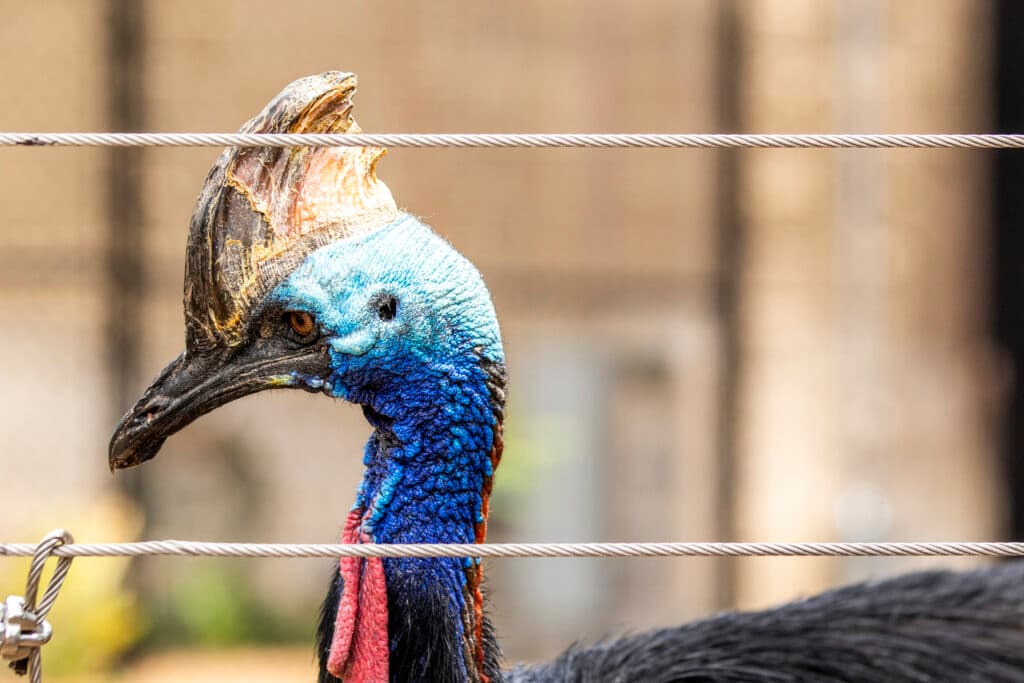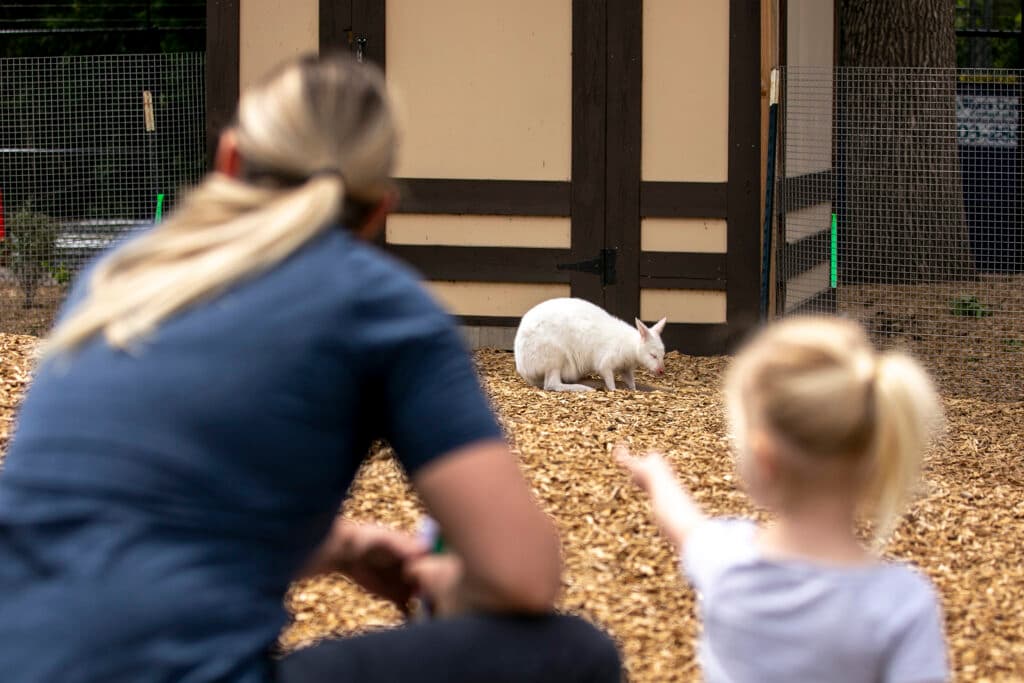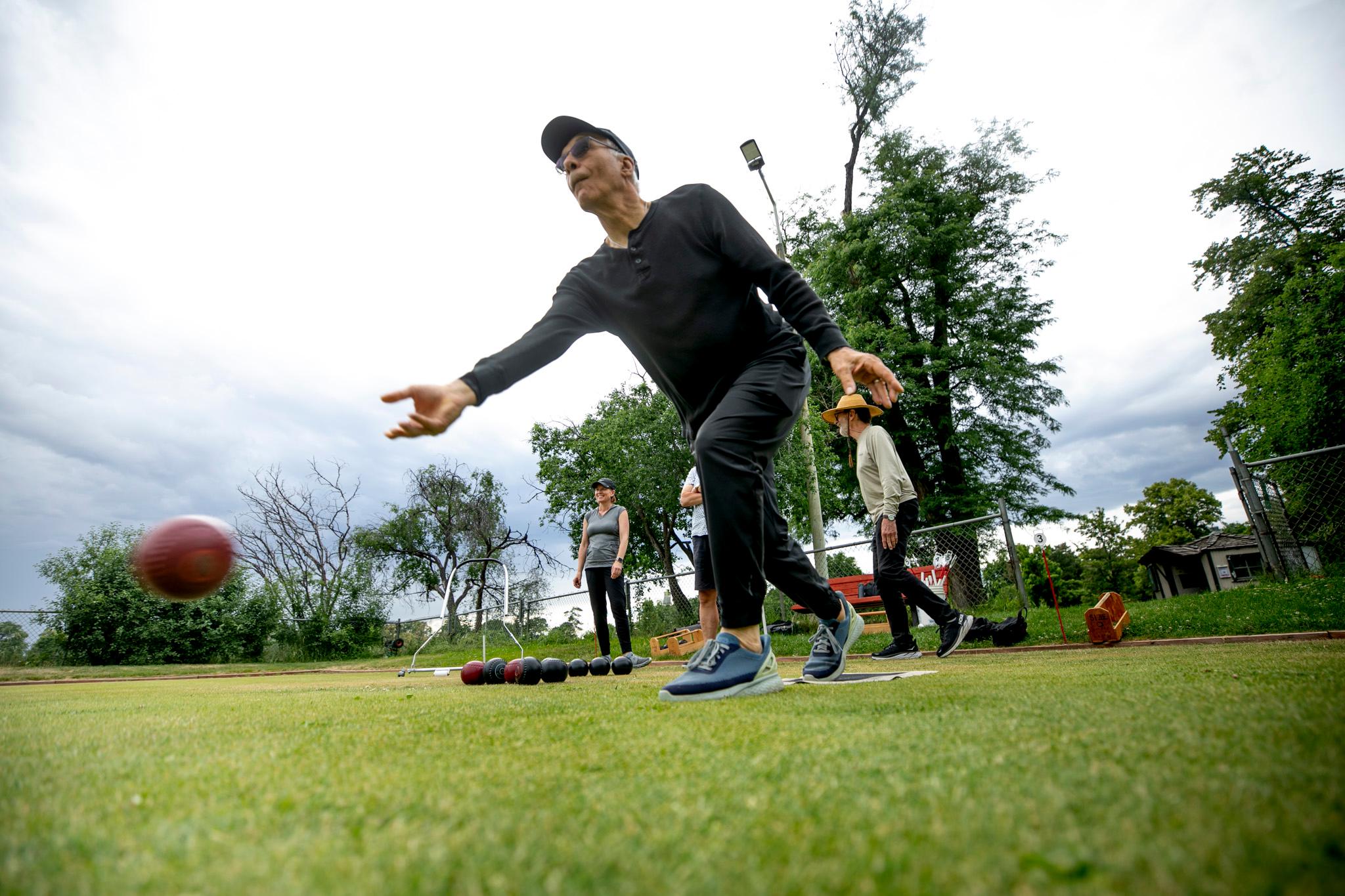Crikey! The Denver Zoo’s new Down Under Habitat, home to animals found in Australia and New Zealand, will officially open to the public Friday.
The new habitat was announced in March 2022 and adds nearly two acres to the Zoo’s existing campus in City Park.
It’s taking over the space once occupied by “Bird World.” That habitat required extensive, costly repairs and no longer met the zoo’s standards when it was demolished in 2019.
Four species of animals native to Australia and New Zealand will call Denver their new home, including red kangaroos, red-necked wallabies, the prehistoric-looking southern cassowary, and the endangered huon tree kangaroos.

Matthew Lenyo, the curator of primates and pavilions at the zoo, said they ensured the animals would be able to thrive in Denver’s climate.
“That's kind of how we came to be in that area with the tree kangaroos. That's a new species to Denver Zoo, and that was something that we really felt like we had the ability to help support that program by having multiple exhibits that we could do breeding and support the population in that way,” he said.
Up close and personal
The centerpiece of the new habitat is “Wallaby Way” – an enclosed pathway where nothing but open air separates guests from the wallabies and red kangaroos. Visitors are encouraged to look, not touch — despite how cute Marshmallow, the zoo’s new albino wallaby, may look.
“If one of the animals approaches, we just ask guests to keep our hands up and back up a little bit. One of our zoo educators will come up,” said Jadynn Goffeney, an educator stationed in the exhibit. “We want to make sure that the animals have enough space around them just so that they're comfortable.”

The zoo has described the habitat as “immersive,” but not “interactive.” Visitors should feel like they’re guests in the animals’ home, and learn to treat them with respect.
“That's just a different view,” Lenyo said. “I think that that is something that, especially for kids, can be really exciting to have that opportunity and just connect in a different way.”
On Tuesday, as members of the zoo toured the new habitat, most of the animals shied away from visitors. Marshmallow, who was rescued by the zoo when the SeaQuest aquarium in Littleton closed, got the closest to the crowd, but still stayed several feet away from the pathway guests are restricted to.


“Marshmallow’s probably my favorite,” Goffeney said. “She's honestly just as sweet as her name says. She is such a cute, sweet, curious individual.”
Many of the animals are getting used to their new environment and will likely open up to guests as time goes on, Goffeney said.
‘Down Under’ was built for scalability, but there are no plans to expand currently
Sitting at nearly two acres, the Down Under habitat can likely be cleared by time-conscious visitors in under 30 minutes.
That has the potential to change, although not likely in the immediate future.


The habitat is built to be flexible in case the zoo decides to take in new animals, Lenyo said. But that wouldn’t happen for at least a few more years.
“One of our goals within my team within the next year is to explore, like, ‘Hey, do we add another species of wallaby?’” Lenyo said. “Do we look at something like an emu that might be able to also be in that immersive exhibit as well?”
Growth may also happen in more natural ways than the zoo acquiring new species. Animals living in the habitat may mate. Marsupials have an extremely short gestation period, but joeys (that’s Australian for baby kangaroos) remain in the pouch for several months.

“A lot of times if we're not doing active pouch checks, we don't know if there's a baby in [their pouches] until they emerge,” Lenyo said. “And that's something that our team eventually will start training, is a pouch check with the animals where they're comfortable allowing us to put a camera in their pouch to monitor any offspring that would have been born.”
The zoo’s Down Under habitat is the capstone in a year of growth for the Denver Zoo. Earlier this year, the zoo announced it would open a 570-acre facility in Weld County to expand its animal care and conservation breeding efforts.














